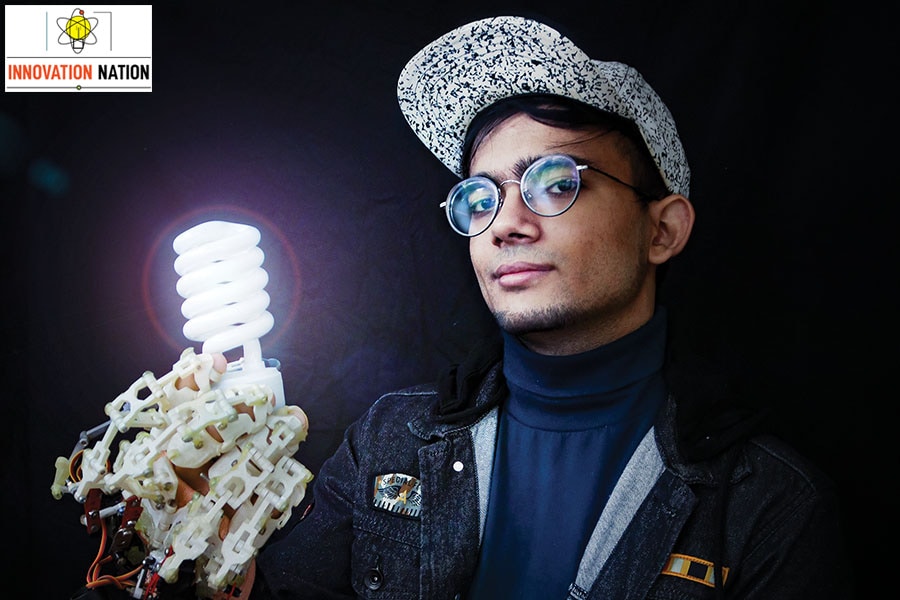
Meet the 21-year-old inventor of Neuro-Exoheal, a wearable device to help patients with hand paralysis
Zain Samdani's keen interest and research on improving the quality of life of people with paralysis has led to the development of a wearable device, whose sensory and exoskeletal robotic gloves can ensure sensation in a paralysed hand
 Zain Samdani developed Neuro-ExoHeal, a wearable device, to help patients with hand paralysis.
Zain Samdani developed Neuro-ExoHeal, a wearable device, to help patients with hand paralysis.
Image: Stefan Andrei MICU
During a family vacation in 2015, Zain Samdani met his distant maternal uncle for the first time. The then-teenager was shocked to see him partially paralysed due to a stroke; he could barely respond and was unable to even lift a spoon.
“Imagine what it would be like to have another person help you out for every little activity in your life?” says Samdani.
On researching about paralysis, Samdani found out that the rehabilitation is time-consuming and psychologically strenuous, and that robotic rehabilitation sessions cost as much as ₹8,000-12,000 per session. “When I visited a couple of these [rehab] centres, I realised the patients had to travel there, which was extremely painful. Additionally, though the sessions were expensive, I couldn’t see much modern technology being used,” says the now-21-year-old. These observations led him to develop Neuro-ExoHeal, a wearable device, to help patients with hand paralysis.
The device is divided into a sensory glove for the functional hand and an exoskeletal robotic glove for the paralysed hand, based on the concept of neuroplasticity. Samdani found out about this concept when he was reading The Brain that Changes Itself by Norman Doidge, and realised how neuroplasticity could help persons with disability. At that time, he was also working on developing affordable prosthetic hands. “Things just clicked and everything just pieced together,” he says. Given how complicated the subject was, Samdani had to extensively research on it—secondary, as well as primary research, including meeting a lot of neuroscientists and physiotherapists—before coming up with an innovative solution.




 Samdani explains how Neuro-ExoHeal’s technology works: “When a movement is performed by the functional hand, the exoskeleton forces the paralysed hand to mirror the same motion. This mirroring allows the mirror neuron to trick the brain into believing that the paralysed hand is alright, forming new neural connections and reviving the paralysed hand.”
Samdani explains how Neuro-ExoHeal’s technology works: “When a movement is performed by the functional hand, the exoskeleton forces the paralysed hand to mirror the same motion. This mirroring allows the mirror neuron to trick the brain into believing that the paralysed hand is alright, forming new neural connections and reviving the paralysed hand.” Neuro-ExoHeal has been tested on 30 to 50 patients, and has seen positive results. “When my uncle, for instance, used the device, he was able to feel sensations in his paralysed hand for the first time. I witnessed him holding a spoon… this would normally take weeks or months if you go by the traditional route,” explains Samdani. Similarly, another bedridden patient was able to sit upright without the assistance of another person.
Neuro-ExoHeal has been tested on 30 to 50 patients, and has seen positive results. “When my uncle, for instance, used the device, he was able to feel sensations in his paralysed hand for the first time. I witnessed him holding a spoon… this would normally take weeks or months if you go by the traditional route,” explains Samdani. Similarly, another bedridden patient was able to sit upright without the assistance of another person. 




